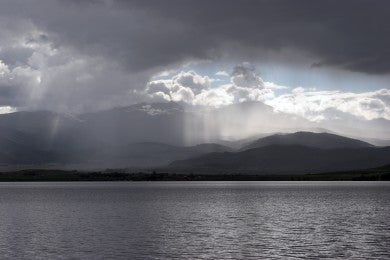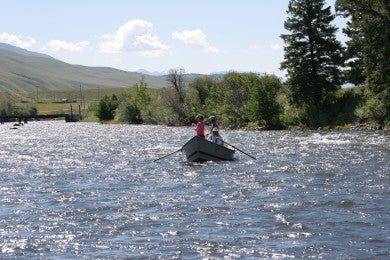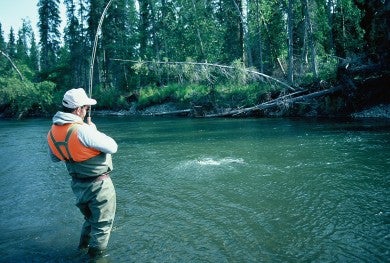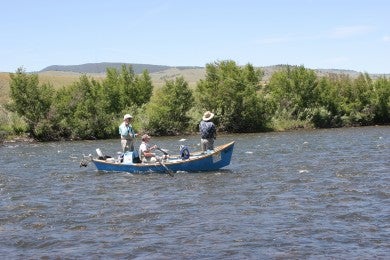Fall Fishing for Brown Trout
Bob McNally 09.14.15
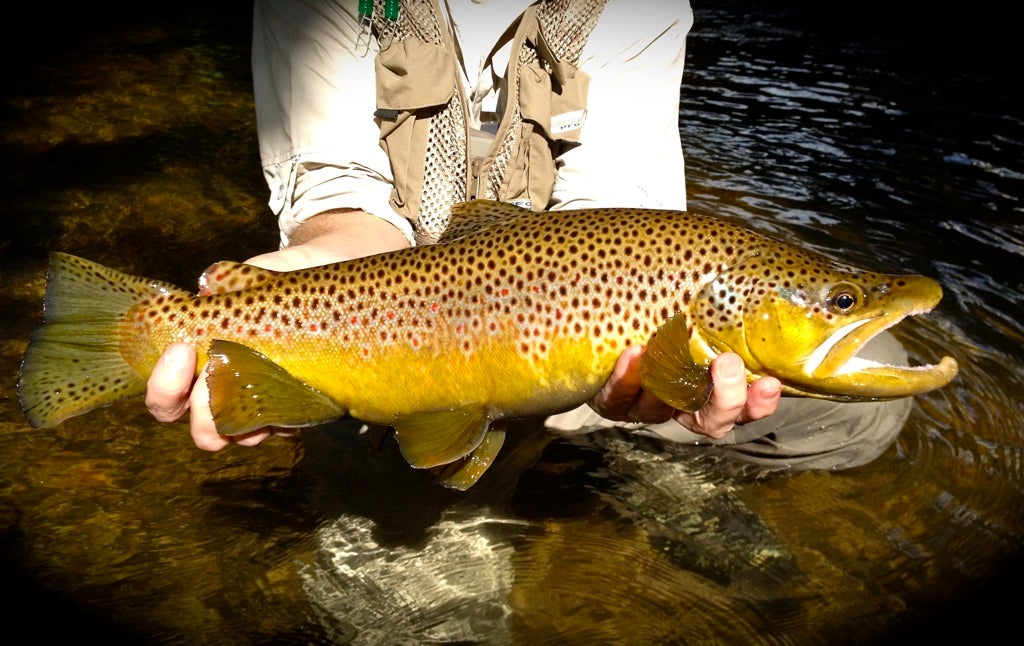
Fall fishing for brown trout is special.
Seasonal change is in the wind, and trout are making the most of summer’s final bounty. It is a unique time for anglers, one that affords some of the top fishing of the year. And for folks who believe the sun rises and sets only on trout water, browns are high on the target menu.
It’s in fall that the biggest, cagiest, toughest-to-catch browns are most vulnerable to anglers. Enormous trout that usually reside only in deep water of sprawling lakes far from shore and others that rarely venture out from beneath undercut banks of broad, deep rivers, move into smaller creeks and shallower areas where they can be readily caught.
Broad-back, hooked-jaw, roe-laden browns generally start spawning by October. But browns glide into lake, river, and stream shallows weeks prior to spawning and go on a wild feeding spree. Browns prefer spawning in shallow water streams over gravel bottom. Fish residing in lakes and large rivers generally move into smaller feeder streams or creeks. At times gigantic browns, some weighing 5 to 10 pounds and higher, can be found in air-clear feeder creeks just a few feet across and hardly deep enough to cover their backs.
This is a blessing and a curse.
It’s true you’ll raise more good browns in fall and certainly catch more chunky fish that move out of big water into feeders, but I’ve long lost count of the enormous autumn browns I’ve broken off in small streams feeding some well-known trout rivers. There is simply no way to battle and hold a wild brown weighing 5 to 8 pounds and up in a 20-yard wide creek full of tight turns and shoreside willows and logs. You can beef up leader tippets, but only to a degree because water is usually vodka clear, and shallow. These are ideal conditions for presenting flies to big trout, but they’re not always conducive to landing giants in trickles.
But as the saying goes, “it is better to have hooked and lost, than never to have hooked at all.” To feel a six weight rod throb with the power of a full-blown 5-pound brown as it goes boring down-current from your feet, through a pool, and around the next bend is adrenalin-thumping–even when your heavy tippet parts like a .38 pistol shot.
Because not all browns spawn at the same time, it’s possible for an angler to have many weeks of prime, fall-run brown trout fishing even in just one lake, river, or stream. Another plus for autumn trout fishing is many sportsmen are busy hunting. Vacationing anglers also are limited because school is back in session. Thus, in many locales fall brown trout fishing is largely ignored, particularly when weather cools.
A great spot for autumn browns migrating from a lake or big river into a feeder creek for spawning is near the creek mouth. Most such feeders have a bar of some type, and it’s a natural staging and feeding place that can offer awesome fishing. Such a place can be one of the best places to land giants that are hooked because they may choose to fight in the bigger river rather than in the smaller stream. Fighting a fish in deep water of the bigger river is your best chance of seeing a 5-pounder up close.
Where a feeder creek enters a larger river, there’s usually a confluence of water that forms a swirling backwash. This invariably creates a deep hole, usually in the larger river on the down-current side of the smaller creek.
Browns that move out of the river and into the creek to spawn are sure to hold in the hole at the mouth of the creek for a time prior to entering the stream. Such places may seem too small to harbor large trout, and through much of the year they may be. However, hefty browns living in lakes, for example, can migrate up a large feeder river, then once in the river they can move into small creeks where they are vulnerable to anglers unlike any other time of year.
The point here is never to discount a feeder creek as being too small to hold big fall browns. Often by quietly walking along such creeks, an angler wearing polarized sunglasses can locate big trout that readily hit fly-rod nymphs and streamers.
